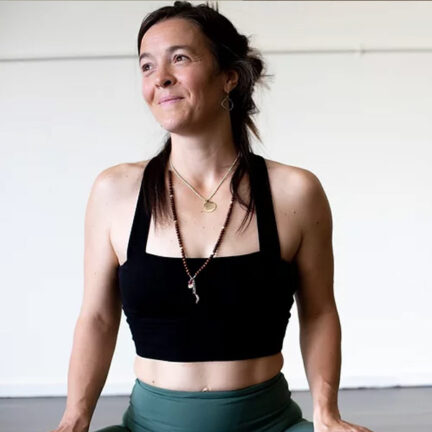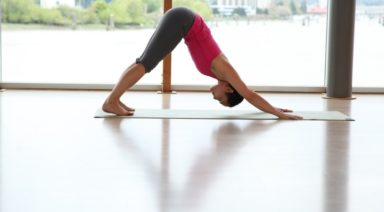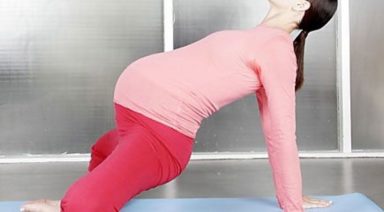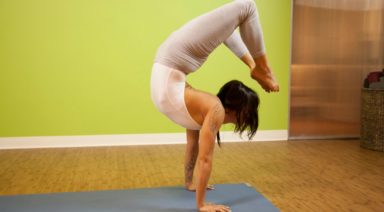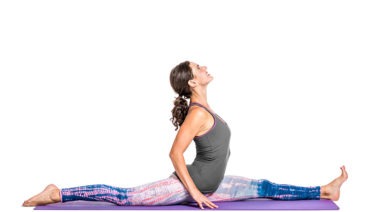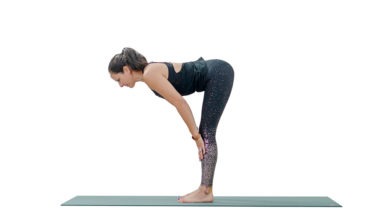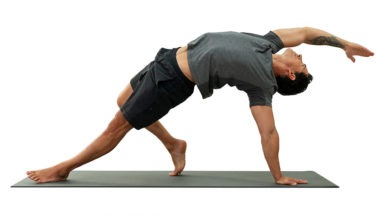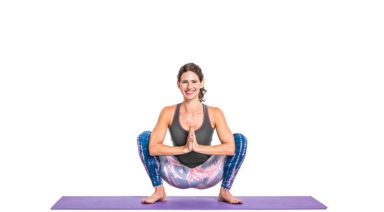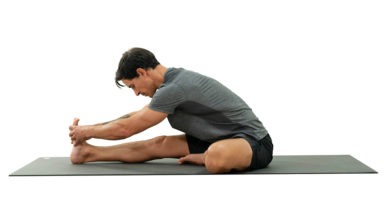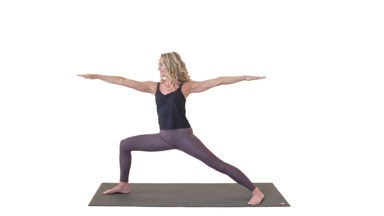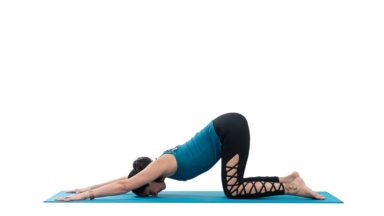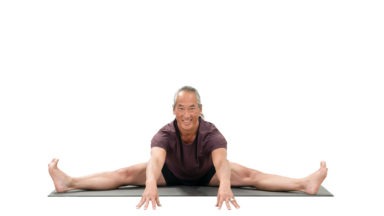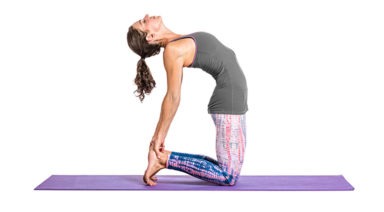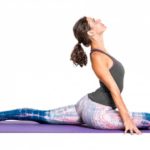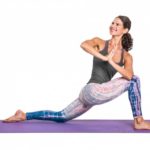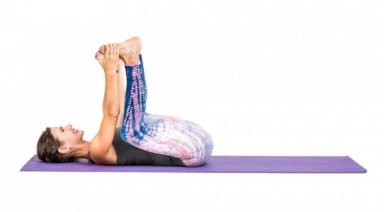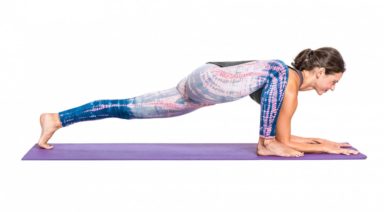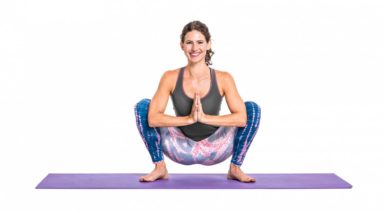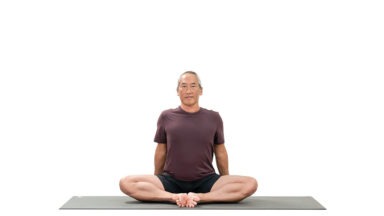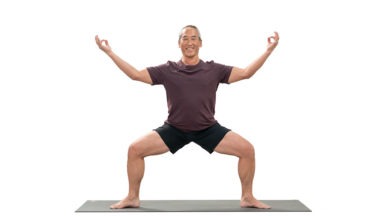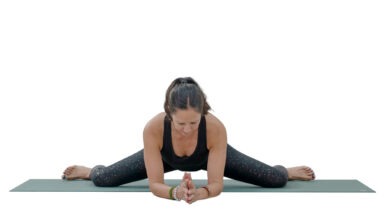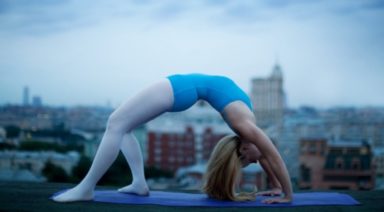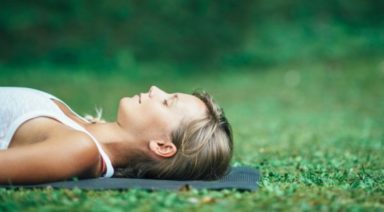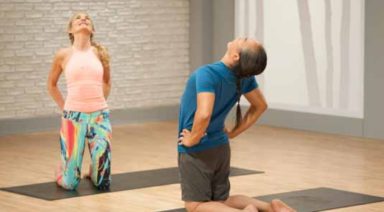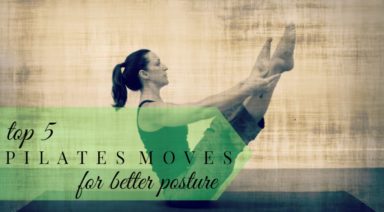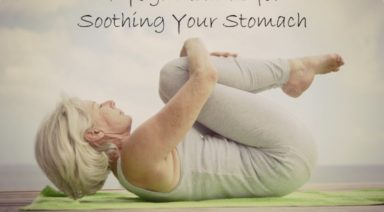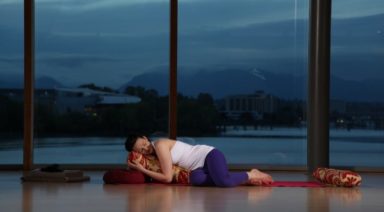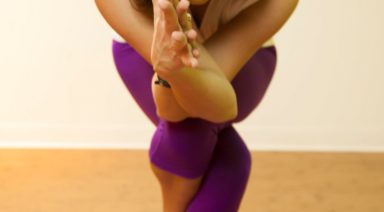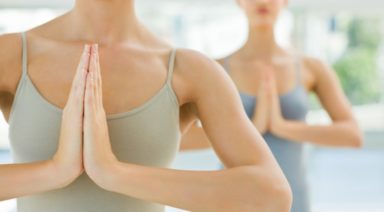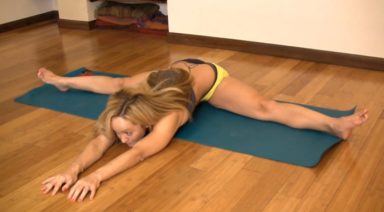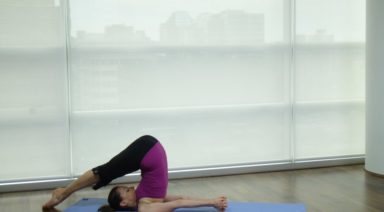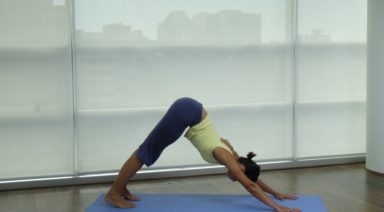The Principles of Tensegrity

Tensegrity is a term that was first described by Buckminster Fuller as an architectural term. It is defined as a balance of discontinuous compression elements, which are connected by continuous tension forces, which allow any system to exist in balance. Expressed in a living form, Dr. Stephen Levine defined it, biotensegrity. In our case, as human beings, the fascial matrix and muscles form the system of tension and the bones float within the matrix creating relationships of discontinuous compression that connect through the whole system.
“A model based on Fuller’s Tensegrity…may also be utilized to demonstrate the structural integration of the body. All our previous concepts of biomechanics of the body will have to be reassessed in relation to this model and our therapeutic approaches to the musculo-skeletal system will have to be revised.” ~ Stephen Levine
I read that Dr. Ida Rolf used to say to her students that it’s not the bones which hold the muscles or the muscles which hold the bones but rather that the bones should float inside the flesh. I like this. Essentially, our bones are floating in our tissues. None of our bones actually touch one another.
A single breath creates dynamic relationships in 136 joints in the human body. When balanced, in relationship to gravity, movement transfers through our living systems evenly and there is no single place in the body, which needs to single-handedly support us.
Try this. Stand on your two feet and close your eyes. Visualize this idea: none of your bones actually touch…your bones are swimming around inside the tension of your connective tissue matrix. What effect does this have on the way you feel inside the ocean of your body?
This model of the human body differs from Newton’s model of the skeleton and joints like a frame, from which the soft tissues are suspended. We move, flow and breathe unlike mechanical structures, like a house, with right angles and parallel lines.
Examples of Tensegrity in Nature:
- DNA Helix structure.
- Old growth tree blowing in the wind.
- Bicycle wheel with spokes.
- Balloon.
- Single Cell in the human body.
Tips for embodying biotensegrity in your yoga practice:
- Imagine softening and widening each joint in your body. Lie on your back with your pelvis on a block, legs in the air. It is easiest to begin without weight-bearing to feel the matrix of space around each joint. Explore bending and straightening your knees. Feel the circumference of your knee joints. Imagine threading a needle with a fine piece of thread. When the joints come into a place of balanced tension there is a “threaded” feeling, and the bones almost seem to disappear. Joints become waterfalls of moving energy rather than holding zones of compression within our fascial web of tension.
- Oscillating, varying, omni-directional movements are a great gift for loosening (or balancing) the braids of the fascial matrix. Have you ever had a tangled necklace in your drawer? In order to untangle the necklace, we must soften the chain and slowly jiggle/wiggle/oscillate the tissue 3-dimensionally, until it is ready to be untied. If we just pull the necklace strings in opposite directions, the knots just get tighter (and might eventually break). Have you ever felt this in a yoga posture; pulling, pulling, pulling (sometimes for years), and nothing is happening? The oscillation allows for holding patterns to soften, new neuromuscular movement patterns are programmed and hyper-flexible (or overstretched) parts of our bodies begin to re-integrate. Consider lying on your back again and moving your limbs like they are the limbs of an octopus slithering about in the ocean. Can you move in such a way so that the bones and joints of your body feel soft, light, fluid and hollow? Tensegrity structures feel light and strong, and yet they are relaxed and take up a comfortable amount of space (like a balloon or a bicycle wheel, light & strong).
- Rest into Ease. A tensegrity body rests, even through sequences of dynamic movement. Tissues appear soft and balanced. There is an evenness of tone throughout the entire system. At any moment, ask yourself, where is the ease? Rather than having an argument with your body or holding on for dear life in a yoga posture, choose to move towards the ease. At first, it might feel like you are doing less, when in fact the vibrancy of the relationships within the inner landscape of your body are only beginning to really shine through. As the armor of your outer body is beginning to let go, the magnificence of the inner world is revealed. Notice what happens to the breath through ease.
In moving towards the ease, layers of the body begin to slide and glide, we begin to feel the organ cavity of life in our bellies, and our yoga practice leaves us as open vehicles ready to receive whatever unexpected curveballs might be manifesting in our lives.
- Taoist 70% Rule. In the Taoist Qi Gong practices, it is often suggested to apply 70% effort. Rather than the attitude of no pain, no gain, which can lead to common overuse injuries, strain to the adrenal glands and unhealthy competitive relationships with our self and the world. The principle upon which the 70% rule is based is that exploration and growth (in life and in a daily yoga practice) must begin by considering your weakest link. Do not seek maximum performance, as that quest may both damage the weak link and cause the whole system (physical, mental, emotional) to contract and tense up.
Explore applying this Taoist idea in your yoga asana practice. Allow yourself to explore moving towards 100% and then backing off to a place where the body feels balanced and even. With a consistent daily practice, I feel much less prone to injury, my nervous system feels settled and I am more productive in relationships and other aspects of my life. What do you notice?
Embodied Tensegrity
These principles have the potential to lay the groundwork for any mindful movement practice. As the foundation of my yoga asana practice, I was introduced to principles of embodied tensegrity, through Gioia Irwin 4 years ago. In diving between the layers of the body and embracing the spaces that emerge, our fascial web begins to untangle and become more even. The myofascial meridians begin to flow more freely and limbs become light and hollow, like bamboo.
The practice becomes an opportunity to maintain ease and fluidity in movement as the body goes through the natural changes of life. It is a practice of balance and patience, and it opens up a space for listening to the language of the cells in our bodies. Over time, a practice of space, balance, oscillation, ease and movement may also become a metaphor for the way that we live our lives. Perhaps our lives, as a whole, could even become integral tensegrity structures?
Yoga Poses to Ease Digestive Discomfort

If you’re one of the many American who suffers from occasional digestive discomfort, yoga offers a natural way to get relief. Just as you would adapt your diet to address your needs, try including some of these poses into your regular practice.
Cat-Cow – Marjaryasana-Bitilasana

- Improves posture and balance
- Strengthens and stretches the spine and neck
- Stretches the hips, abdomen and bac
- Increases coordination
- Massages and stimulates organs in the belly, like the kidneys and adrenal glands.
- Relieves stress and calms the mind
Downward-Facing Dog – Adho Mukha Svanasana
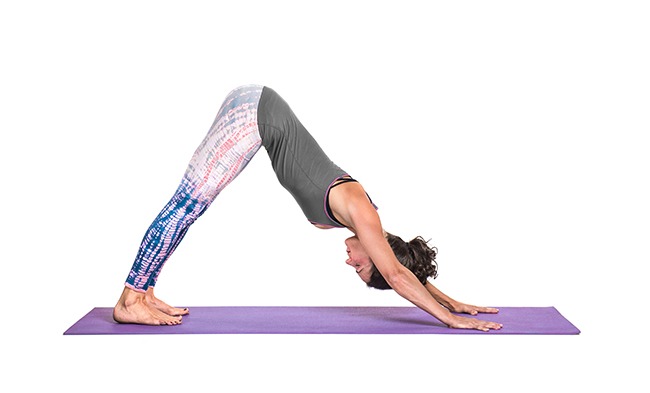
- Calms the brain and helps relieve stress
- Stretches the shoulders, hamstrings, calves, arches, and hands
- Strengthens the arms and legs
- Relieves headache, insomnia, back pain, and fatigue
- Therapeutic for high blood pressure
- Helps prevent osteoporosis
Extended Puppy Pose – Uttana Shishosana
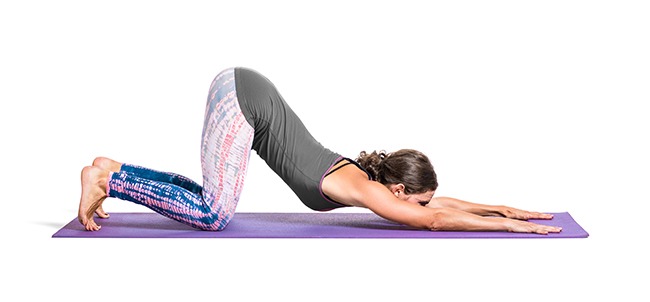
- Releases tension in you upper arms, shoulders, and neck
- Expands the whole front of your chest
- Stretches out your abdominal muscles
- Gently stimulates your back muscles in preparation for further backbends
- Opens up your hips and stretches your hamstrings
Bridge Pose – Setu Bandha Saravangasana

- Streches your chest, neck, spine, and hips
- Strengthens your back, buttocks, and hamstring muscles
- Calms your brain and central nervous system
- Alleviates stress and mild depression
- Massages abdominal organs and improves digestion/li>
- Relieves the symptoms of menopause
- Reduces anxiety, backaches, headaches, and insomnia
Wind-Relieving Pose – Ardha Pawanmuktasana

- Stretches the neck and back
- Pressure on the abdomen releases any trapped gases in the large intestine
- Blood circulation is increased to all the internal organs
- Relieves constipation
- Strengthens the back and abdominal muscles
- Massages the intestines and other organs in the abdomen
- Eases tension in the lower back

